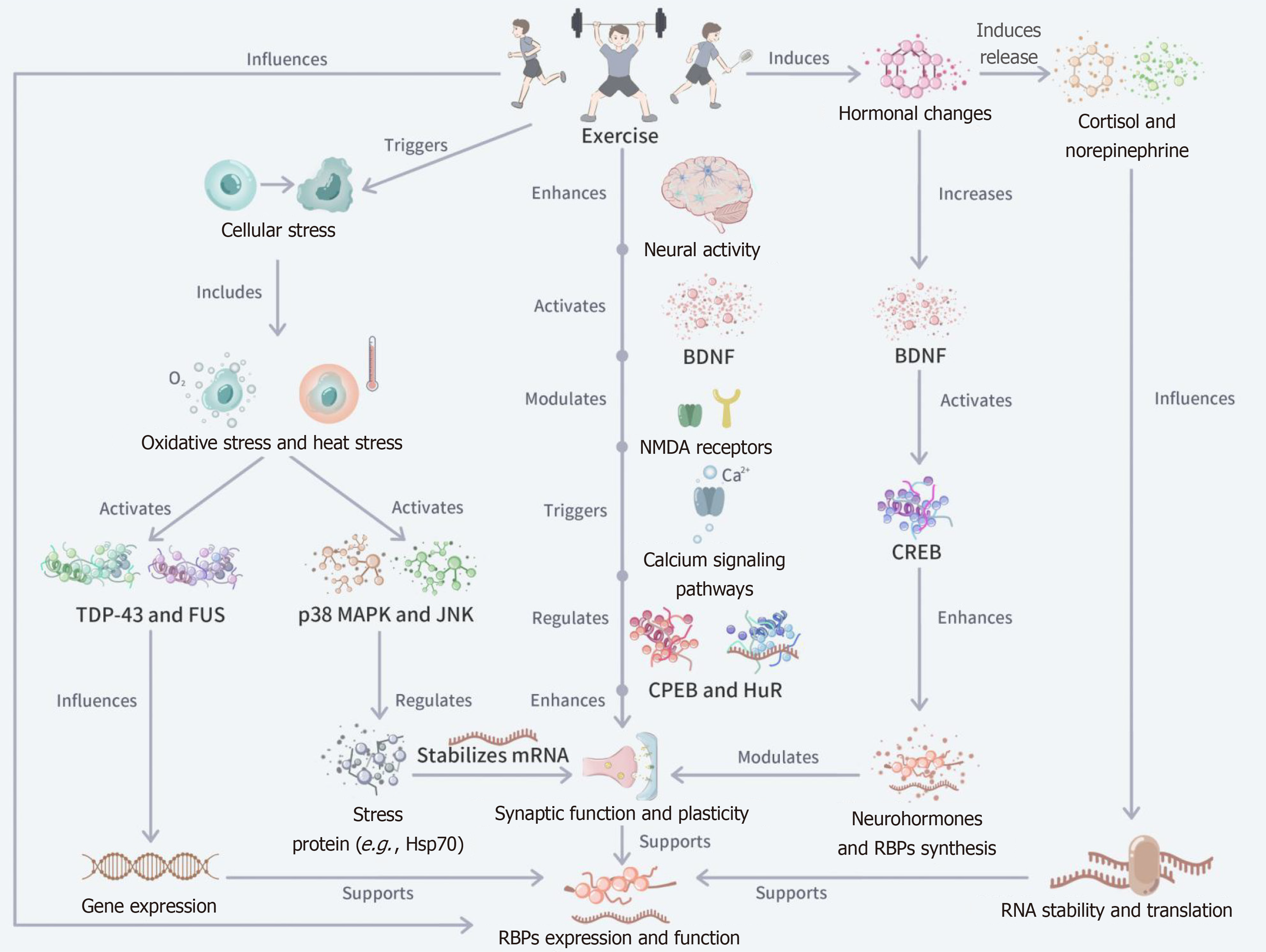Copyright
©The Author(s) 2025.
World J Psychiatry. Sep 19, 2025; 15(9): 107498
Published online Sep 19, 2025. doi: 10.5498/wjp.v15.i9.107498
Published online Sep 19, 2025. doi: 10.5498/wjp.v15.i9.107498
Figure 3 Mechanism of the effect of exercise on the expression and function of RNA binding proteins.
The figure starts with exercise and describes its regulation of RNA binding proteins (RBPs) through three major pathways - neural activity, hormonal changes, and cellular stress. Role of RBPs. In the neural activity pathway, exercise activated brain-derived neurotrophic factor, N-methyl-D-aspartate receptors, and calcium signaling pathways to regulate RBPs such as cytoplasmic polyadenylation element-binding protein and human antigen R to enhance synaptic function and neuroplasticity. The hormonal change pathway reveals that exercise raises the levels of brain-derived neurotrophic factor and stress hormones (e.g., cortisol), which alters RNA stability and translation efficiency. The cellular stress pathway, on the other hand, reveals that exercise-induced oxidative stress and heat stress ultimately support gene expression and adaptation in the nervous system by activating RBPs such as stress proteins (e.g., Hsp70), TAR DNA-binding protein 43, and fused in sarcoma. BDNF: Brain-derived neurotrophic factor; NMDA: N-methyl-D-aspartate; CPEB: Cytoplasmic polyadenylation element-binding protein; HuR: Human antigen R.
- Citation: Lu Y, Kong JD, Zhao LN. Role of RNA-binding proteins in exercise-induced mRNA regulation: Unveiling biomarkers and therapeutic targets for schizophrenia. World J Psychiatry 2025; 15(9): 107498
- URL: https://www.wjgnet.com/2220-3206/full/v15/i9/107498.htm
- DOI: https://dx.doi.org/10.5498/wjp.v15.i9.107498









